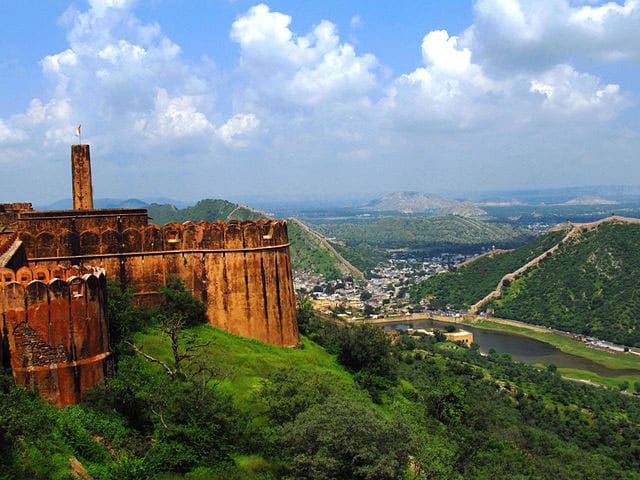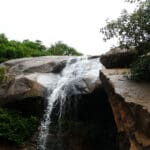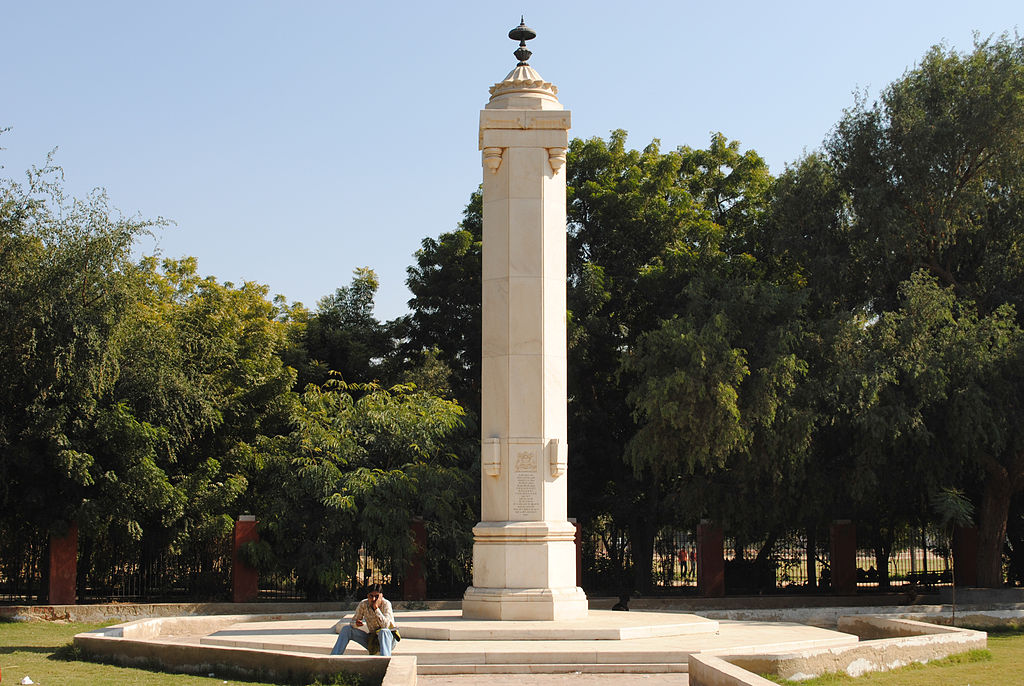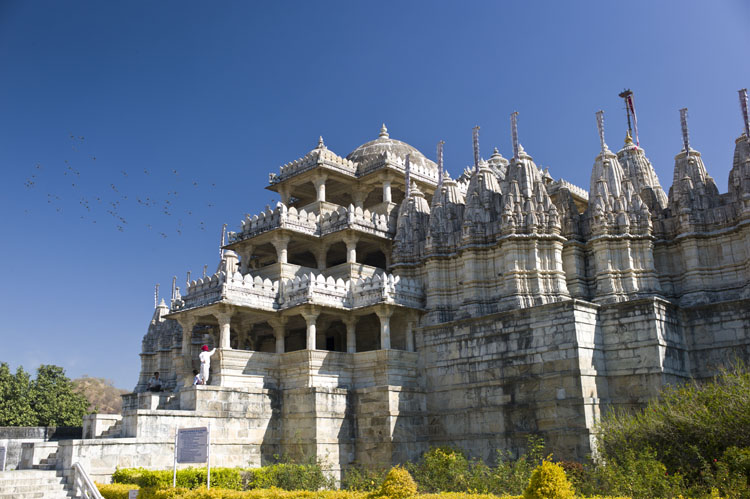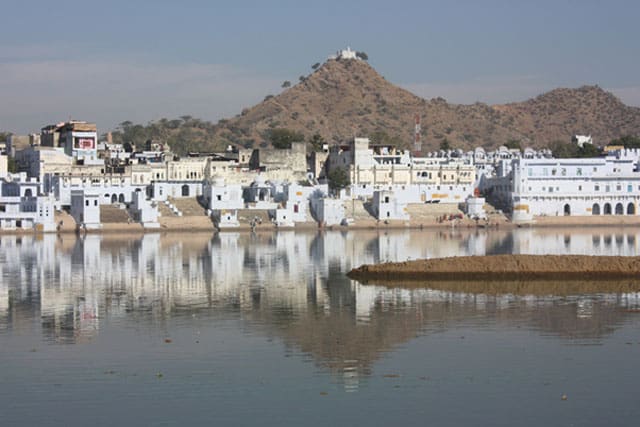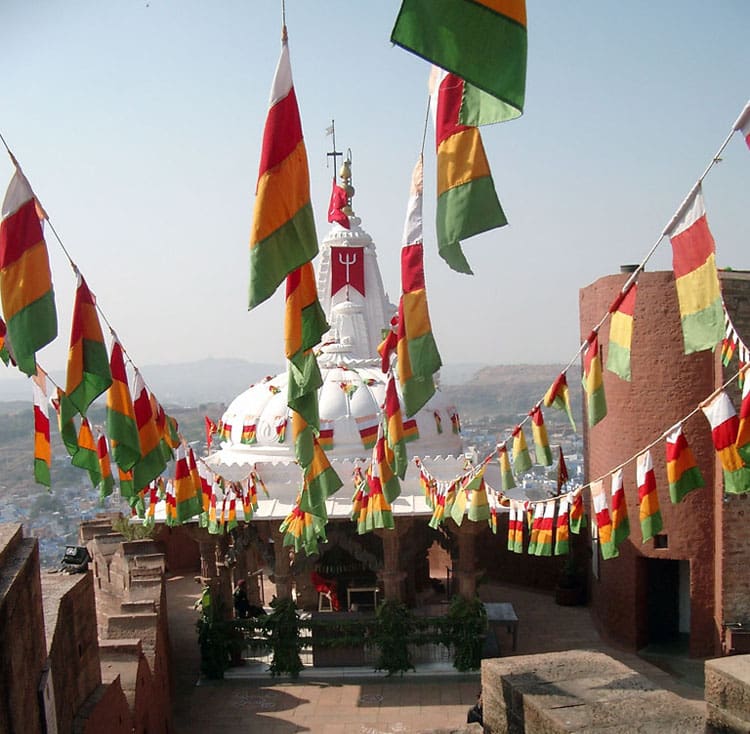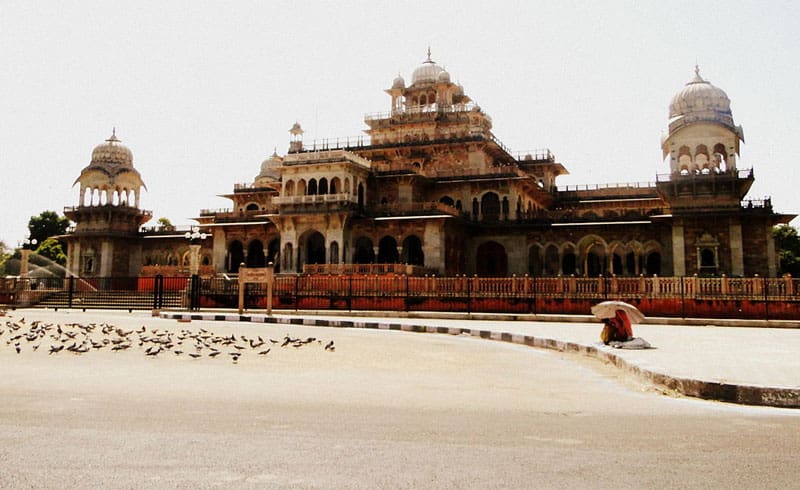Nestled atop the rugged Aravalli Hills in Jaipur, Jaigarh Fort stands as a testament to the grandeur and military prowess of the Rajput era. Often overshadowed by its more famous neighbor, Amber Fort, Jaigarh Fort is a hidden gem that offers a fascinating glimpse into Rajasthan’s rich history, architectural brilliance, and strategic ingenuity. This comprehensive guide will take you through everything you need to know about Jaigarh Fort, from its history and architecture to its attractions and practical travel tips.
1. History of Jaigarh Fort: A Fortress of Strength and Strategy
Origins and Purpose
Built in 1726 by Sawai Jai Singh II , the founder of Jaipur, Jaigarh Fort was primarily constructed as a defensive stronghold to protect the Amber Fort and the surrounding region. Its name, “Jaigarh,” translates to “Victory Fort,” reflecting its role as a symbol of power and triumph.
- Strategic Location : Perched on the Cheel Ka Teela (Hill of Eagles) , the fort commands a panoramic view of the surrounding landscape, making it an ideal vantage point for monitoring enemy movements. The elevated position not only provided a tactical advantage but also made it difficult for enemies to scale its walls.
- Military Importance : The fort housed a massive arsenal, including cannons, weapons, and ammunition, and served as a garrison for soldiers. It played a crucial role in safeguarding the kingdom during times of conflict. Its robust defenses ensured that it remained impregnable throughout its history.
- The World’s Largest Cannon : One of the fort’s most iconic features is the Jaivana Cannon , the world’s largest wheeled cannon, which was cast within the fort’s premises in 1720. Weighing over 50 tons, it remains a marvel of engineering and craftsmanship. The cannon was fired only once during its lifetime, reportedly causing damage several kilometers away. Its sheer size and historical significance make it a must-see attraction for visitors.
Historical Significance
Despite its formidable defenses, Jaigarh Fort has never been captured in battle. It also famously stored the royal treasury of the Kachwaha dynasty for centuries, though legends of hidden treasure remain unverified. According to local folklore, the fort’s underground tunnels were used to transport gold and other valuables to Amber Fort, ensuring their safety during times of war.
2. Architecture of Jaigarh Fort: A Masterpiece of Rajput Engineering
Jaigarh Fort is a stunning example of Rajput military architecture, blending functionality with aesthetic appeal. Its design reflects the ingenuity of its creators, who prioritized both defense and comfort.
Key Architectural Features
- Massive Walls and Bastions : The fort is surrounded by thick, red sandstone walls that stretch over 3 kilometers. These walls are reinforced with bastions and watchtowers, providing excellent protection against invaders. The walls are so sturdy that they have withstood the test of time and still stand tall today.
- Water Reservoirs : The fort houses an intricate network of water channels and reservoirs, ensuring a steady supply of water even during prolonged sieges. The Sagar Talav , a large tank, collects rainwater and is still functional today. This system highlights the advanced understanding of water management by the Rajputs.
- Palaces and Courtyards : Within the fort’s walls lie several palaces and courtyards, such as the Laxmi Vilas , Vijay Garh , and Aram Mandir , which were used by the royal family for leisure and administrative purposes. These structures are adorned with frescoes, mirrors, and intricate carvings, showcasing the opulence of Rajput architecture.
- Armory and Foundry : The fort’s armory once housed an impressive collection of weapons, while the foundry was used to manufacture cannons and other artillery. The presence of a fully functional foundry within the fort underscores its self-sufficiency and strategic importance.
- Underground Tunnels : Legends speak of secret tunnels connecting Jaigarh Fort to Amber Fort, though these have not been fully explored or verified. These tunnels were rumored to be used for covert operations and as escape routes during emergencies.
Design Philosophy
The fort’s layout emphasizes both defense and sustainability. Its elevated position, robust construction, and self-sufficient systems made it nearly impregnable, earning it the nickname “The Invincible Fort.” Every aspect of the fort’s design reflects the foresight and ingenuity of its builders, who anticipated the challenges of warfare and devised solutions to overcome them.
3. Attractions Inside Jaigarh Fort: What to See and Do
Jaigarh Fort is packed with attractions that cater to history buffs, architecture enthusiasts, and casual visitors alike. Here’s a detailed look at what you can explore:
1. Jaivana Cannon
- The highlight of the fort, this colossal cannon is a must-see. It was fired only once during its lifetime, reportedly causing damage several kilometers away. Visitors can marvel at its sheer size and learn about its historical significance. The cannon is mounted on a wheeled platform, allowing it to be moved as needed.
2. Laxmi Vilas
- This palace served as the residence of the royal family. Its halls and chambers are adorned with frescoes, mirrors, and intricate carvings, showcasing the opulence of Rajput architecture. The palace also features a small temple dedicated to Goddess Laxmi, the deity of wealth and prosperity.
3. Vijay Garh
- A towering structure within the fort, Vijay Garh offers breathtaking views of the surrounding hills and valleys. It’s the perfect spot for photography enthusiasts. The structure itself is an architectural marvel, with its imposing facade and ornate details.
4. Water Systems
- Explore the fort’s ingenious water management systems, including the Sagar Talav and aqueducts. These systems demonstrate the advanced engineering skills of the Rajputs. The Sagar Talav, in particular, is a marvel of hydraulic engineering, capable of storing millions of liters of water.
5. Museum
- The museum inside the fort displays artifacts such as weapons, armor, photographs, and manuscripts, offering insights into the fort’s history and the lifestyle of its inhabitants. Exhibits include ancient swords, shields, and muskets, as well as documents detailing the fort’s role in various battles.
6. Gardens and Courtyards
- The lush gardens and open courtyards provide a serene contrast to the fort’s otherwise imposing structure. They are ideal for relaxing and soaking in the ambiance. The gardens are meticulously maintained and offer a peaceful retreat from the hustle and bustle of modern life.
7. Panoramic Views
- From the fort’s ramparts, you can enjoy sweeping views of Amber Fort, Maota Lake, and the Aravalli Hills. The vistas are especially stunning during sunrise and sunset, when the golden light bathes the landscape in a warm glow. Photography enthusiasts will find plenty of opportunities to capture the beauty of the surroundings.
4. How to Reach Jaigarh Fort: Travel Tips
Location
Jaigarh Fort is located approximately 15 kilometers from Jaipur city center and is connected to Amber Fort via a well-maintained road.
By Road
- Private Vehicles : You can hire a taxi or drive your own vehicle to the fort. The road leading to Jaigarh is scenic and offers glimpses of rural Rajasthan. Private vehicles provide the flexibility to explore the fort at your own pace.
- Public Transport : Buses and shared autos are available from Jaipur to Amber Fort, from where you can take a short ride to Jaigarh. Public transport is an economical option, though it may require some walking or additional transfers.
By Foot
For the adventurous, there’s a steep trek from Amber Fort to Jaigarh Fort. The trail passes through dense forests and offers a unique perspective of the Aravalli Hills. The trek takes approximately 1-2 hours, depending on your pace and fitness level.
5. Best Time to Visit Jaigarh Fort
The best time to visit Jaigarh Fort is during the winter months (October to March) when the weather is pleasant and ideal for sightseeing. Summers can be extremely hot, with temperatures often exceeding 40°C, while monsoon rains may make the trek slippery.
- Morning Visits : Arriving early allows you to beat the crowds and enjoy the fort in peace. The morning light is also ideal for photography, casting soft shadows and highlighting the fort’s architectural details.
- Sunset Views : If you’re visiting in the evening, don’t miss the golden hour when the fort glows under the setting sun. The panoramic views of the surrounding landscape are particularly enchanting during this time.
6. Entry Fees and Timings
Entry Fees
- Indians : ₹50 per person
- Foreigners : ₹100 per person
- Camera Charges : ₹50 (still camera), ₹200 (video camera)
Timings
- Open Daily : 9:00 AM to 5:30 PM
- Note: The fort is closed on certain public holidays, so it’s advisable to check ahead.
7. Things to Keep in Mind While Visiting
- Comfortable Footwear : The fort covers a large area, and exploring it involves walking on uneven terrain. Wear sturdy shoes to ensure comfort and safety.
- Hydration : Carry water bottles, as there are limited refreshment options inside the fort. Staying hydrated is essential, especially during the summer months.
- Guided Tours : Hiring a local guide can enhance your experience by providing historical context and interesting anecdotes. Guides are knowledgeable and can help you navigate the fort’s many attractions.
- Photography : While photography is allowed, avoid using drones without prior permission. Be respectful of restricted areas and follow any guidelines provided by the authorities.
- Respect the Heritage : Refrain from littering or damaging any structures within the fort. Preservation efforts rely on the cooperation of visitors to maintain the site’s integrity.
8. Nearby Attractions: Extend Your Jaipur Adventure
Jaigarh Fort is part of a cluster of attractions in Jaipur, making it easy to combine your visit with other nearby landmarks:
1. Amber Fort
- Just a short distance away, Amber Fort is a UNESCO World Heritage Site known for its stunning architecture and historical significance. The fort’s intricate marble work and expansive courtyards are a visual treat.
2. Nahargarh Fort
- Another hilltop fort offering panoramic views of Jaipur city, Nahargarh is perfect for sunset lovers. The fort’s ramparts provide an excellent vantage point for photography and relaxation.
3. City Palace
- Located in the heart of Jaipur, this palace complex showcases the blend of Rajasthani and Mughal architectural styles. Its museums and galleries offer insights into the royal lifestyle and history of the region.
4. Hawa Mahal
- The iconic “Palace of Winds” is a must-visit for its unique facade and historical charm. Built in 1799, it was designed to allow royal ladies to observe street festivals while remaining unseen.
5. Jantar Mantar
- A UNESCO-listed observatory featuring astronomical instruments designed by Sawai Jai Singh II. The precision and scale of these instruments are a testament to the scientific advancements of the era.
“Jaigarh Fort is not just a monument; it’s a living chronicle of Rajasthan’s valor, vision, and resilience.”
Conclusion
Jaigarh Fort is a treasure trove of history, architecture, and natural beauty. Its strategic location, awe-inspiring cannons, and intricate water systems make it a standout destination in Jaipur. Whether you’re a history enthusiast, a nature lover, or simply someone looking to escape the hustle and bustle of city life, Jaigarh Fort promises an unforgettable experience.
As you wander through its ancient corridors and gaze out over the majestic Aravalli Hills, you’ll feel transported to a bygone era of kings and warriors. So, add Jaigarh Fort to your itinerary and immerse yourself in the timeless allure of Rajasthan’s royal heritage.
Frequently Asked Questions (FAQs)
- Is Jaigarh Fort worth visiting?
- Absolutely! It offers a unique blend of history, architecture, and stunning views. The fort’s cannons, palaces, and panoramic vistas make it a must-visit destination.
- How long does it take to explore Jaigarh Fort?
- Plan for 2-3 hours to fully appreciate the fort’s attractions. If you’re interested in photography or history, you may want to allocate more time.
- Can I visit Jaigarh Fort and Amber Fort on the same day?
- Yes, they are close to each other and can be visited together. Many guided tours include both forts in their itineraries.
- Are there food stalls inside the fort?
- Limited options are available; it’s better to carry snacks and water. There are no full-service restaurants within the fort premises.
- Is the fort wheelchair accessible?
- Unfortunately, no. The terrain is uneven and may pose challenges for differently-abled visitors. However, certain areas near the entrance may be accessible with assistance.
- What is the significance of the Jaivana Cannon?
- It symbolizes the military strength and engineering prowess of the Rajputs. As the world’s largest wheeled cannon, it remains a marvel of its time.
- Can I take a guided tour of the fort?
- Yes, authorized guides are available at the entrance. They provide valuable insights into the fort’s history and architecture.
- Are pets allowed inside the fort?
- Pets are generally not permitted, except for service animals. It’s best to leave pets at home or arrange for their care elsewhere.
- What is the best way to reach Jaigarh Fort?
- By private vehicle or taxi for convenience; trekking is an option for adventure seekers. Public transport is available but may require additional walking.
- Is Jaigarh Fort safe for solo travelers?
- Yes, it’s safe, but always stay aware of your surroundings. Stick to designated paths and avoid venturing into restricted areas.


